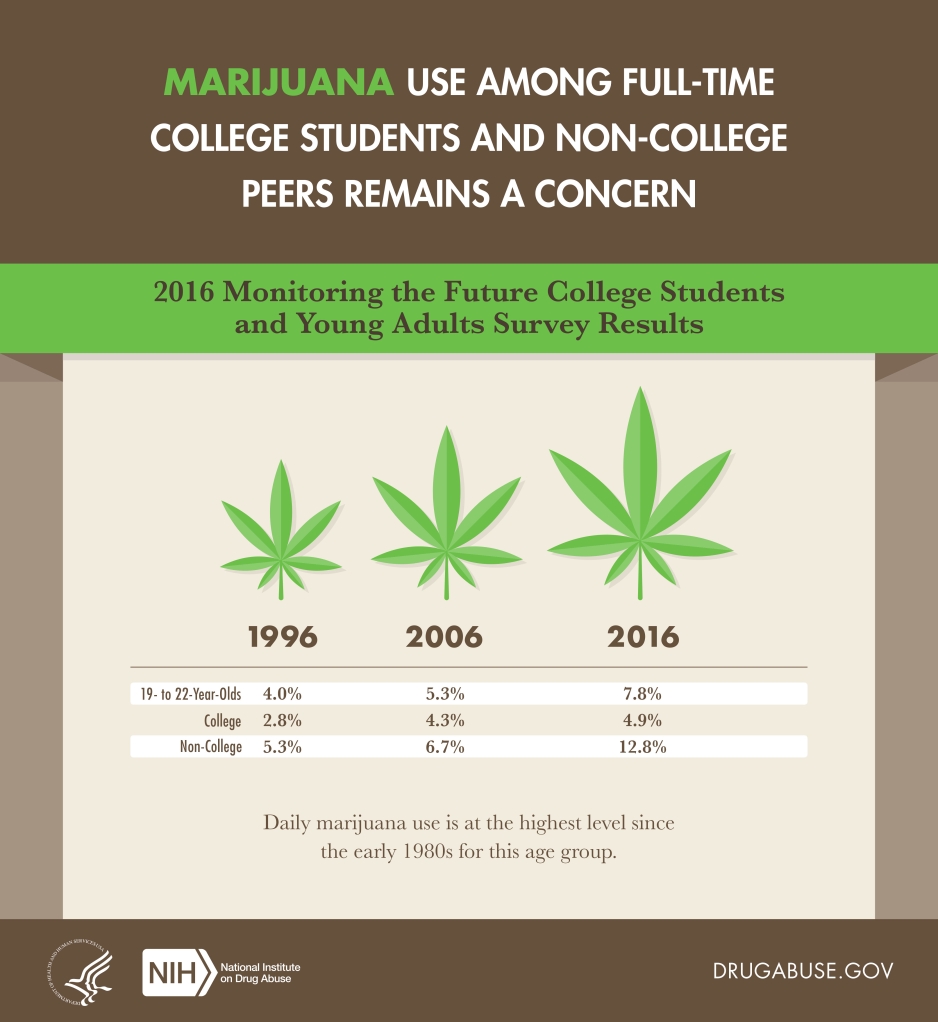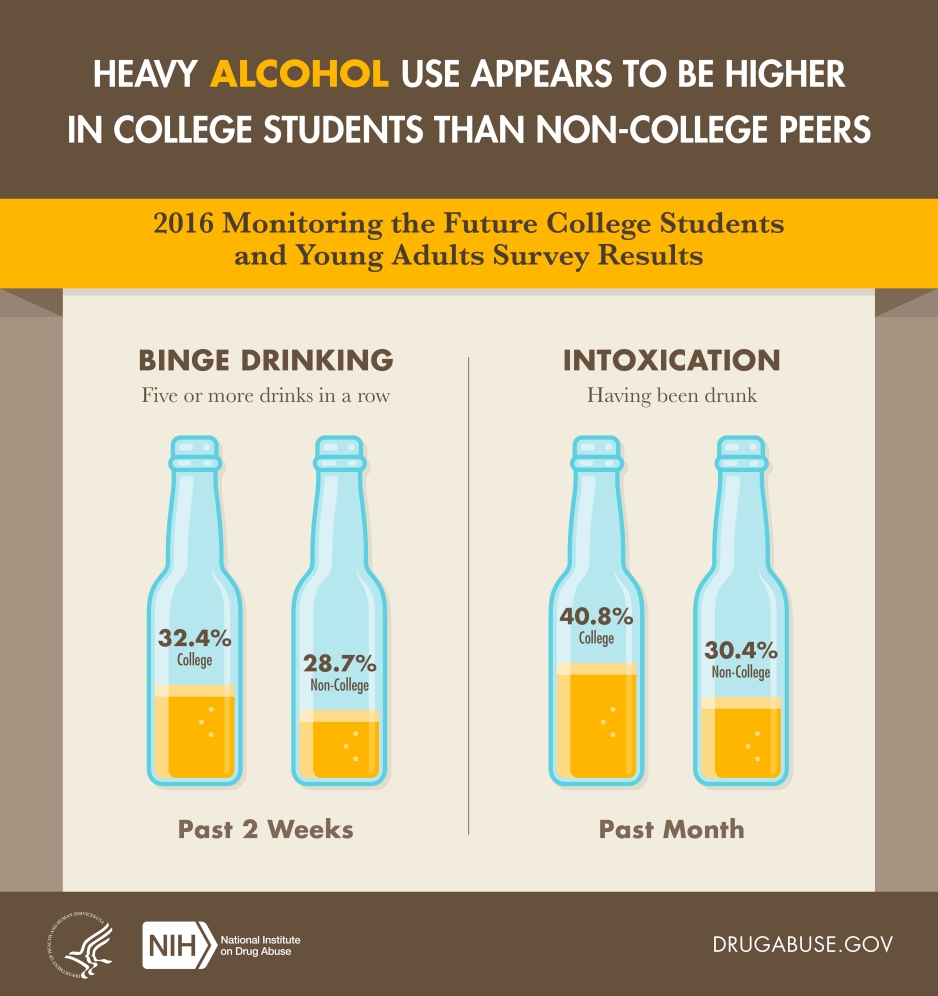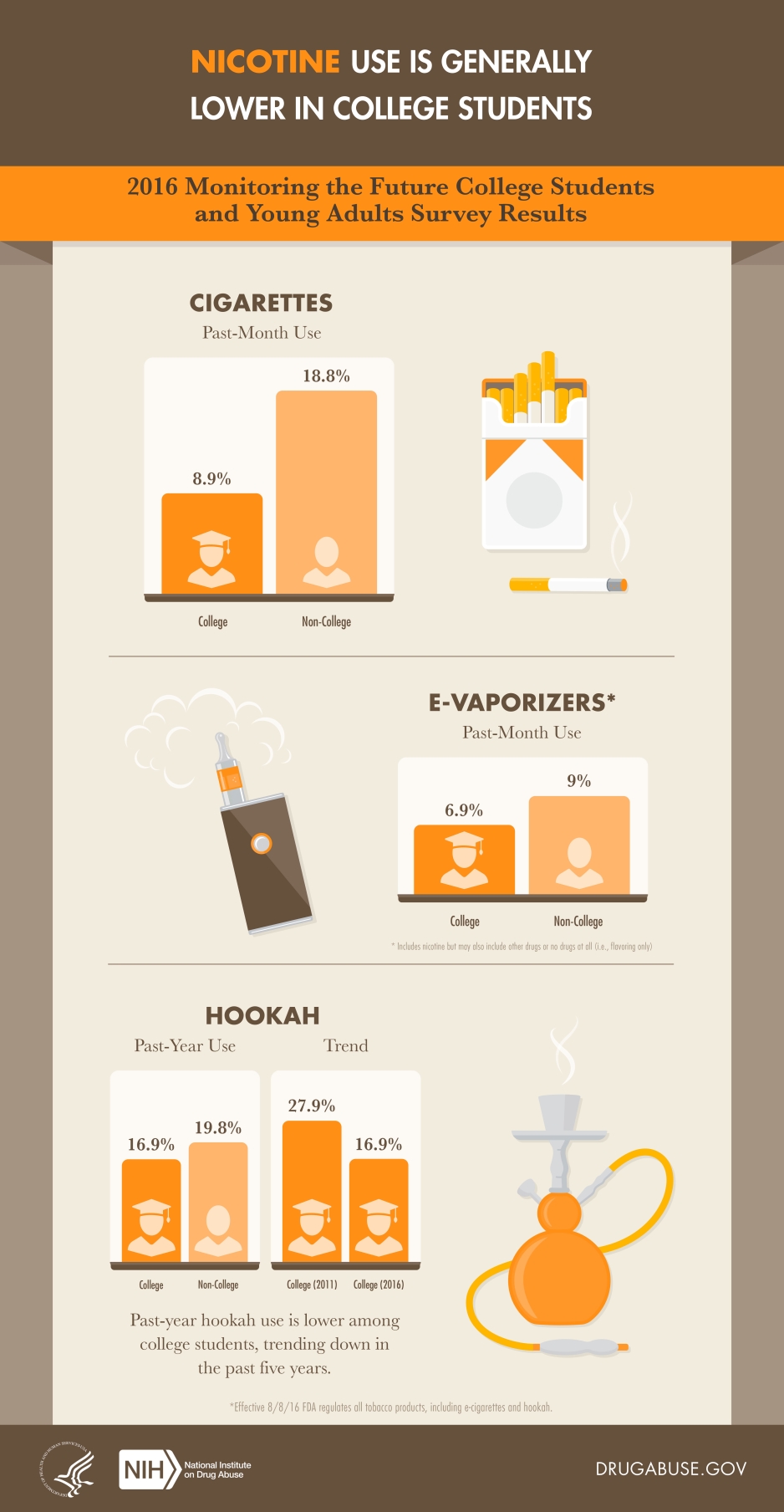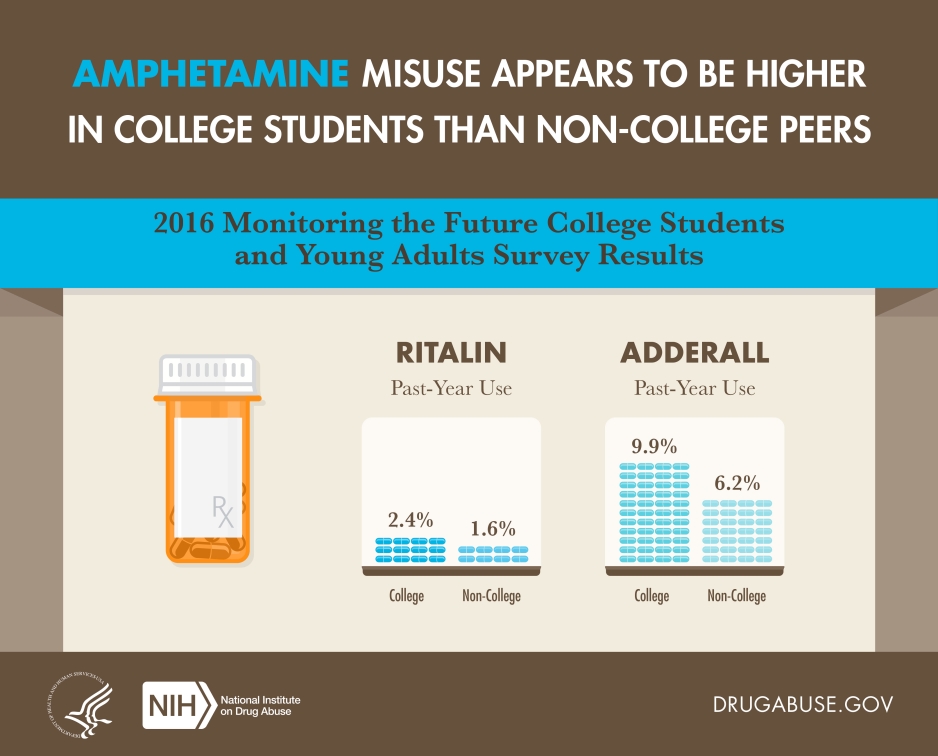The 2016 Monitoring the Future College Students and Young Adults survey shows trends in the use of marijuana, alcohol, nicotine, and other drugs in college students and non-college peers.
Text Description of Infographic
2016 Monitoring the Future College Students and Young Adults Survey Results
First Figure: Marijuana Use Among this Age Group Remains a Concern
Daily marijuana use is at the highest level since the early 1980s for this age group, with 4.9 percent of college students and 12.8 percent of non-college peers reporting daily use.
Second Figure: Heavy Alcohol Use Appears to be Higher in College Students than Non-College Peers
Binge drinking (five or more drinks in a row): 32.4 percent of college students and 28.7 percent of non-college peers in the past 2 weeks.
Intoxication (having been drunk): 40.8 percent of college students and 30.4 percent of non-college peers in the past month.
Third Figure: Nicotine Use is Generally Lower in College Students
Cigarettes (past-month use): 8.9 percent of college students and 18.8 percent of non-college peers.
E-vaporizers* (past-month use): 6.9 percent of college students and 9 percent of non-college peers.
* E-vaporizers may include nicotine, other drugs or no drug at all (i.e., flavoring only).
Hookah (past-year use): Past-year hookah use is lower among college students, with 16.9 percent of college students and 19.8 percent of their non-college peers using hookah. In the past five years, hookah use is trending down in college students. In 2011, past-year hookah use was 27.9 percent and fell to 16.9 percent in 2016.
Fourth Figure: Amphetamine Misuse Appears to be Higher in College Students than Non-College Peers
College students appear to have higher rates of amphetamine misuse, highlighting the trend of using these drugs to increase academic performance. However, there is no evidence that these substances increase performance long-term. Past-year use of Ritalin was 2.4% in college students and 1.6% in non-college peers. 9.9 percent of college students reported past-year use of Adderall compared to 6.2% of their non-college peers.
References:
Schulenberg, JE, Johnston LD, O’Malley PM, Bachman JG, Meich RA, Patrick ME. Monitoring the Future national survey results on drug use, 1975-2016: Volume 2, College students and adults ages 19-55. Ann Arbor: Institute for Social Research, The University of Michigan, 2017.
This publication is available for your use and may be reproduced in its entirety without permission from NIDA. Citation of the source is appreciated, using the following language: Source: National Institute on Drug Abuse; National Institutes of Health; U.S. Department of Health and Human Services.





